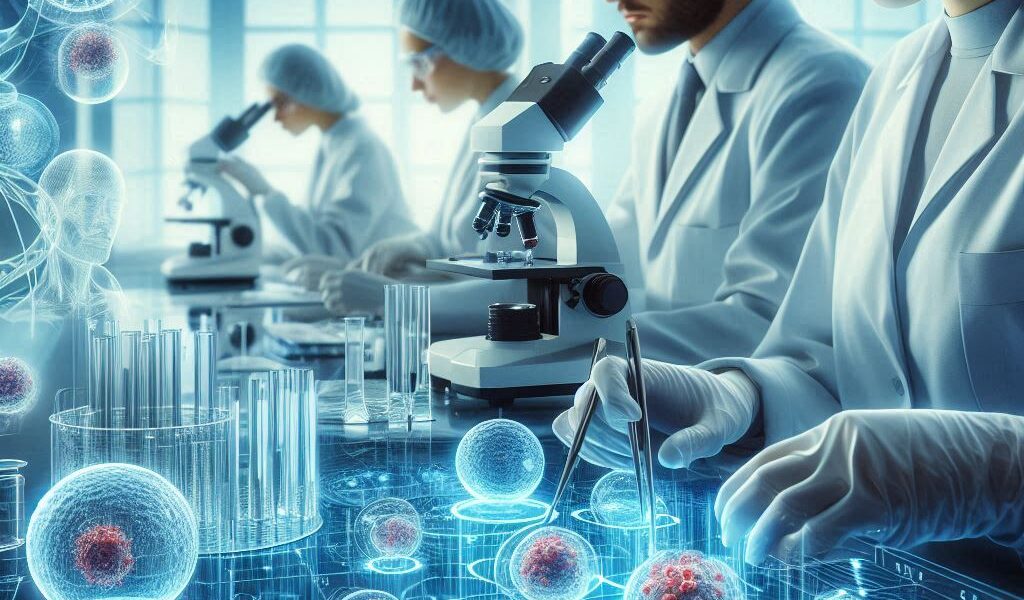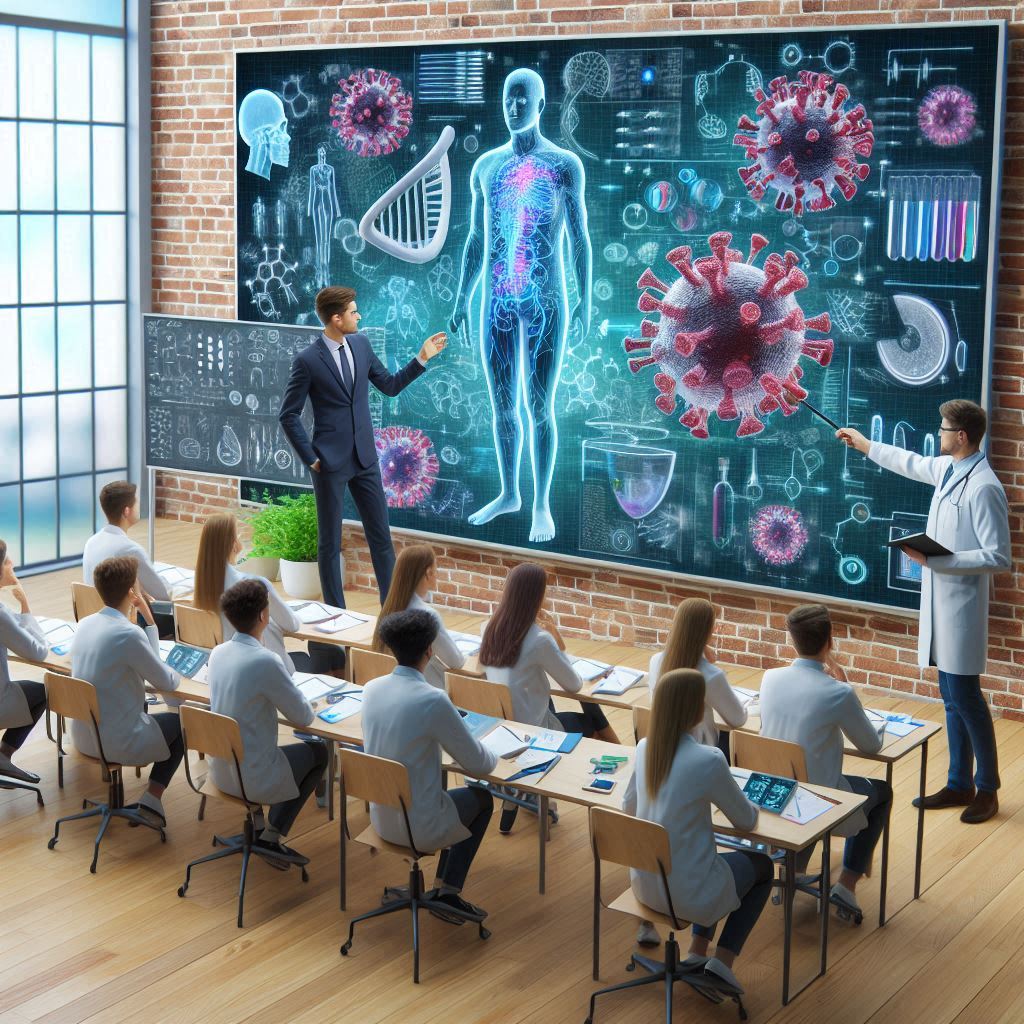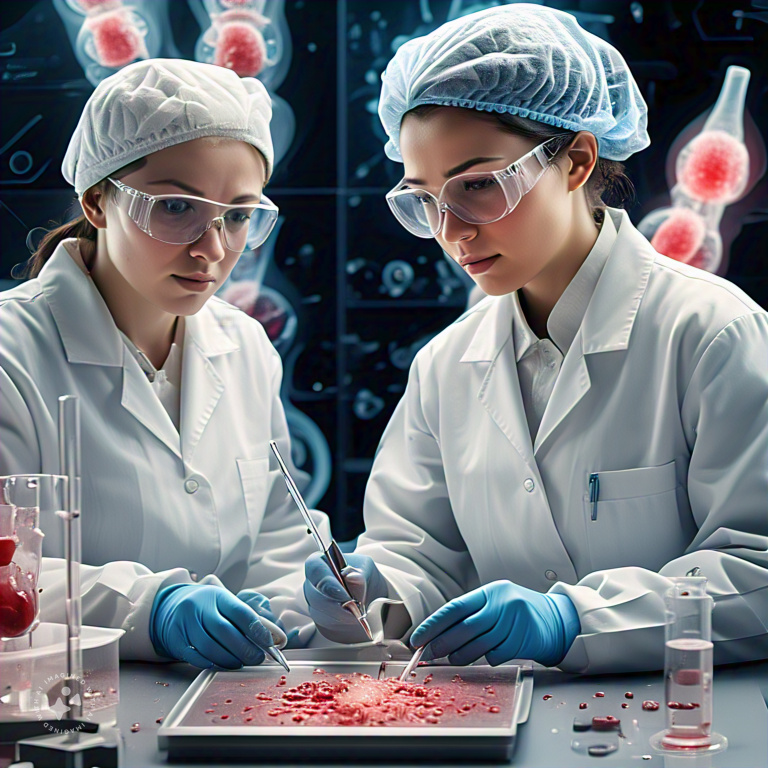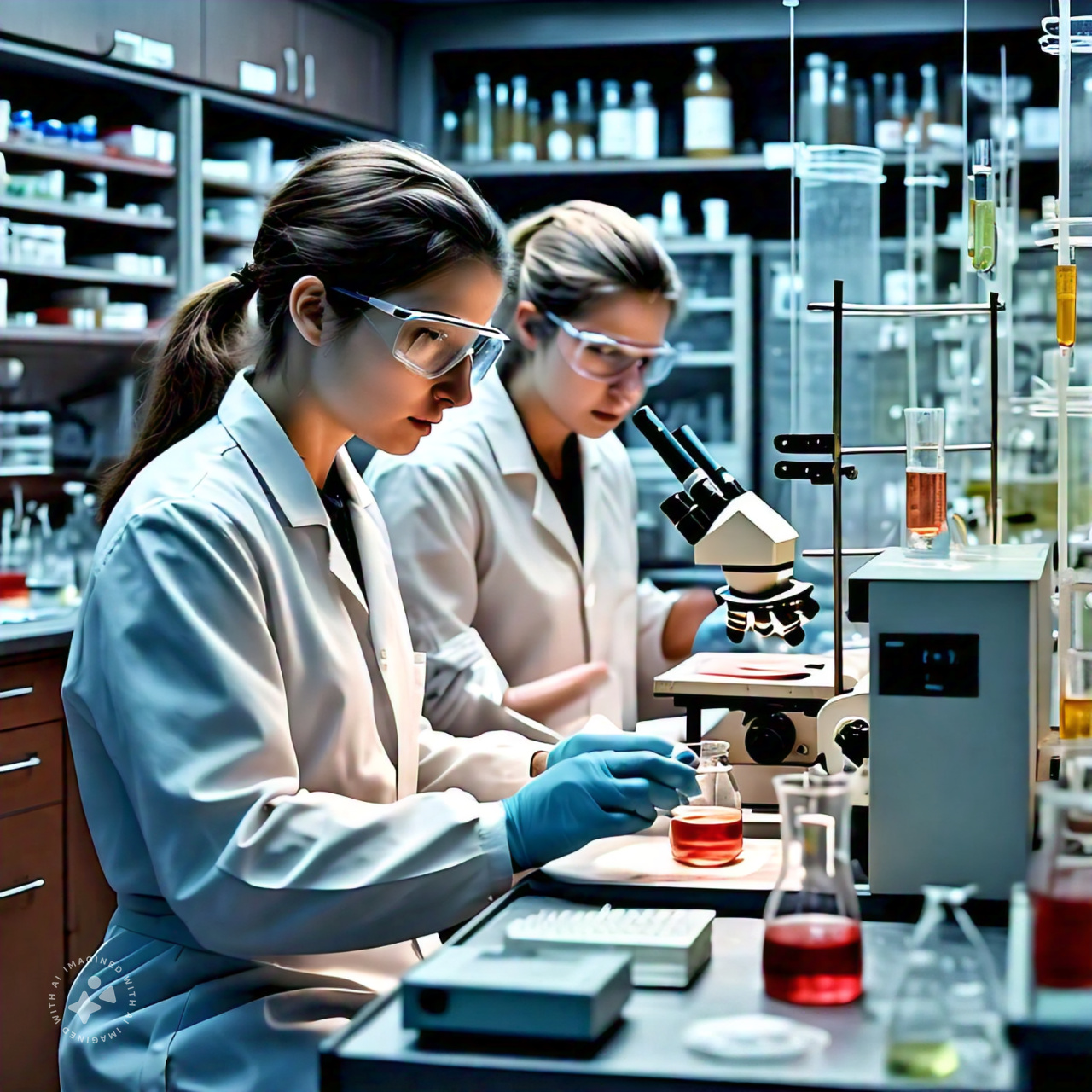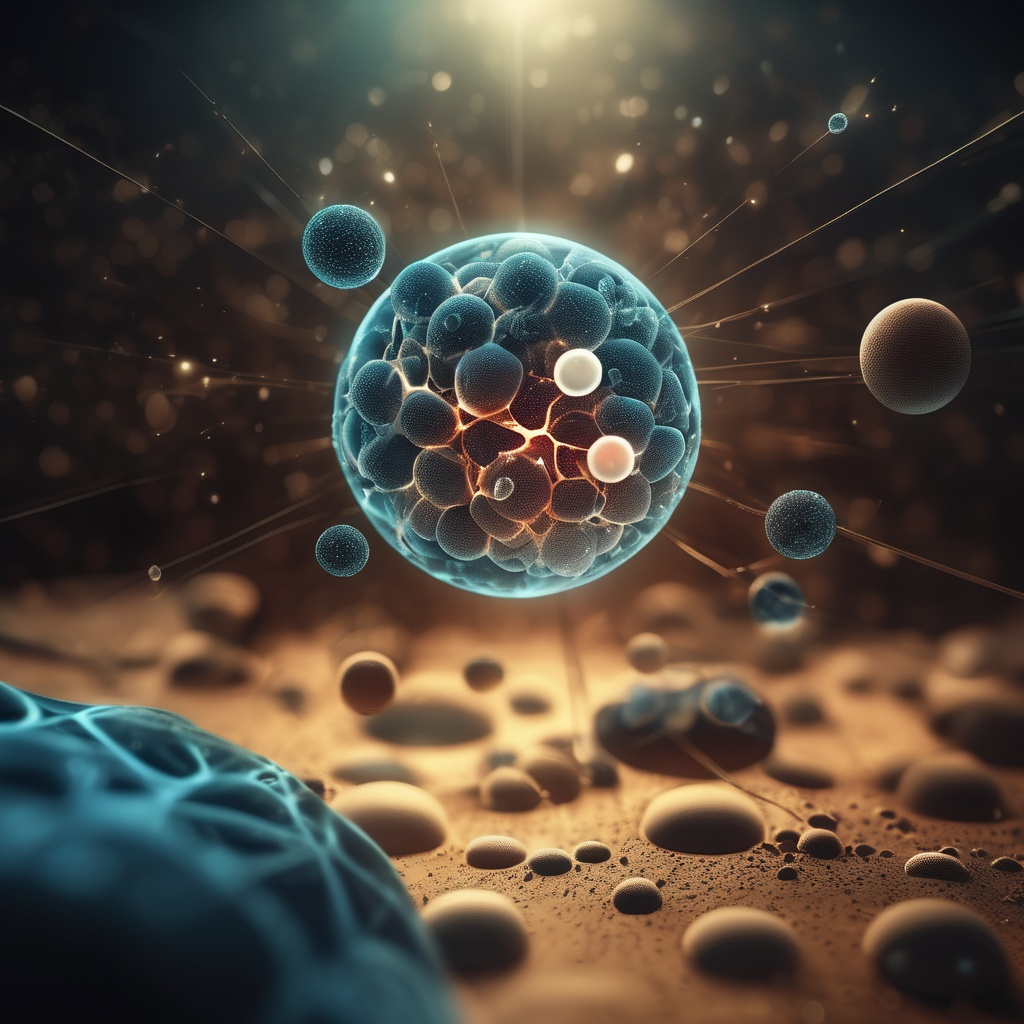Contents
- 1 Unlocking the Potential of Our Body’s Building Blocks
- 2 Prof. Aécio D’Silva, Ph.D AquaUniversity
- 3 Stem cells under the microscope
- 4 Stem Cell Biotechnology – What Are Stem Cells?
- 5
- 6 The Importance of Stem Cell Biotechnology
- 7 Stem Cell Biotechnology – Recent Developments
- 8 Transforming Medicine and Biology
- 9
- 10 Becoming a Stem Cell Biotechnology Scientist
- 11
- 12 What are some real-world applications of stem cell therapy
- 13
- 14 How do stem cells help in heart tissue regeneration
- 15 How successful have clinical trials been in using stem cells for heart repair
- 16 What are the most promising areas for future stem cell therapy advancements?
Unlocking the Potential of Our Body’s Building Blocks
Prof. Aécio D’Silva, Ph.D
AquaUniversity
Stem cells under the microscope
Stem cell biotechnology is a cutting-edge field that harnesses the unique properties of stem cells to develop groundbreaking tools and therapeutics. This rapidly evolving discipline holds immense promise for transforming medicine and deepening our understanding of human biology.
Stem Cell Biotechnology – What Are Stem Cells?
Stem cells are extraordinary cells with the ability to self-renew and differentiate into various specialized cell types. They serve as the body’s natural repair system, capable of replenishing lost or damaged cells throughout our lifetime. There are several types of stem cells:
– Embryonic stem cells: Derived from embryos, these pluripotent cells can differentiate into almost any cell type.
– Adult stem cells: Found in specific tissues, they are multipotent and can differentiate into limited cell types.
– Induced pluripotent stem cells (iPSCs): Created by reprogramming adult cells to an embryonic-like state.
The Importance of Stem Cell Biotechnology
Stem cell biotechnology offers unprecedented opportunities for medical advancements and scientific discoveries. Its importance lies in:
Regenerative Medicine
Stem cells hold the potential to repair or replace damaged tissues and organs, offering hope for treating previously incurable conditions.
Disease Modeling
By creating stem cell-derived models of human diseases, researchers can study disease mechanisms and test potential therapies in a more relevant context.
Drug Discovery and Testing
Stem cells provide a platform for screening new drugs and evaluating their efficacy and safety before clinical trials.
Personalized Medicine
iPSCs derived from individual patients enable the development of tailored treatments and therapies.
Basic Research
Studying stem cells helps us understand fundamental biological processes, including human development and cellular differentiation.
Stem Cell Biotechnology – Recent Developments
The field of stem cell biotechnology is rapidly advancing. Some recent breakthroughs include:
– Successful skin-to-eye stem cell transplants for treating age-related macular degeneration.
– Development of organoids, miniature organ-like structures, for research and drug testing.
– Integrating gene editing technologies like CRISPR with stem cells for potential genetic disorder treatments.
Transforming Medicine and Biology
Stem cell biotechnology is poised to revolutionize healthcare and biological research:
– It offers potential cures for degenerative diseases like Parkinson’s and Alzheimer’s.
– It may enable the growth of replacement organs, addressing the shortage of donor organs.
– It provides insights into human development and disease progression at the cellular level.
Becoming a Stem Cell Biotechnology Scientist
To pursue a career in this exciting field:
- Obtain a strong foundation in biology, chemistry, and genetics.
- Pursue advanced degrees in fields like molecular biology, bioengineering, or regenerative medicine.
- Gain hands-on laboratory experience through internships or research positions.
- Stay updated with the latest developments through scientific journals and conferences.
- Develop interdisciplinary skills, as the field often requires collaboration across various disciplines.
What are some real-world applications of stem cell therapy
Stem cell therapy has shown significant promise in treating a variety of medical conditions. Here are some real-world applications of stem cell therapy:
- Hematopoietic Stem Cell Transplantation (HSCT)
HSCT, commonly known as bone marrow transplantation, is the most established form of stem cell therapy. It is used to treat life-threatening cancers such as multiple myeloma and leukemia, as well as certain autoimmune diseases like multiple sclerosis. This therapy involves replacing damaged or diseased bone marrow with healthy hematopoietic stem cells, which can be sourced from bone marrow, peripheral blood, or umbilical cord blood.
- Treatment of Autoimmune Diseases
Adult stem cells have been successfully used to treat various autoimmune diseases, including lupus, multiple sclerosis, Crohn’s disease, and rheumatoid arthritis. These therapies work by resetting the immune system, reducing inflammation, and promoting tissue repair.
- Corneal Reconstruction
Stem cell therapy has been applied to treat corneal degeneration and restore vision in cases of blindness. Autologous limbal stem cell transplantation, known as Holoclar, has been approved in Europe for treating moderate to severe limbal stem cell deficiency in adults, often caused by eye burns.
- Cardiac Repair
Stem cells have been used to restore proper cardiac function in heart attack sufferers. These therapies involve the infusion of stem cells that can differentiate into cardiomyocytes, the cells that makeup heart muscle, aiding in the repair and regeneration of damaged heart tissue.
- Treatment of Blood Disorders
Stem cell therapies have shown success in treating various blood disorders, including leukemia, lymphoma, and bone marrow failure syndromes. These treatments often involve the transplantation of healthy hematopoietic stem cells to replace dysfunctional bone marrow cells.
- Treatment of Perianal Fistulas in Crohn’s Disease
Alofisel, a therapy based on adipose-derived stem cells, has been approved in the EU for treating complex perianal fistulas in Crohn’s disease patients. This treatment has shown success in cases where conventional treatments have failed.
- Treatment of Immune Deficiencies
Stem cell therapy has been used to treat congenital immune deficiencies. For example, three boys with congenitally impaired immune systems were cured through the implantation of adult stem cells sourced from umbilical cord blood.
- Treatment of Neurological Conditions
Research is ongoing to develop stem cell therapies for neurological conditions such as Parkinson’s disease and spinal cord injuries. Early clinical trials have shown promise in improving movement and function in patients with spinal cord injuries.
How do stem cells help in heart tissue regeneration
Stem cells have shown promising potential in regenerating heart tissue, particularly after damage from events like myocardial infarction (heart attack). Here are some ways in which stem cells contribute to heart tissue regeneration:
- **Differentiation into Cardiomyocytes**: Stem cells can differentiate into cardiomyocytes, the cells that makeup heart muscle. This process helps replace the cardiomyocytes lost during a heart attack, thereby improving heart function. Research has shown that cardiac stem cells (CSCs) can generate new cardiomyocytes, although the exact mechanisms and effectiveness are still under investigation.
- **Paracrine Effects**: Stem cells release various growth factors and cytokines that promote tissue repair and regeneration. These paracrine effects can enhance the survival and function of existing heart cells, reduce inflammation, and stimulate the formation of new blood vessels, improving overall heart function.
- **Stimulation of Endogenous Repair Mechanisms**: Stem cells can activate the body’s intrinsic repair mechanisms. For example, they can stimulate the proliferation of existing cardiomyocytes or recruit endogenous stem cells to the site of injury, aiding in tissue regeneration.
- **Formation of Supportive Tissue**: In addition to forming new cardiomyocytes, stem cells can differentiate into other cell types that support heart function, such as endothelial cells (which line blood vessels) and smooth muscle cells. This helps rebuild the vascular network within the damaged heart tissue, ensuring adequate blood supply and oxygenation.
- **Reduction of Scar Tissue**: After a heart attack, the damaged area often forms scar tissue, which can impair heart function. Stem cell therapy can reduce the formation of scar tissue by promoting the regeneration of healthy heart tissue, thereby improving the heart’s pumping ability and overall function.
Recent advancements in stem cell research and regenerative medicine continue to explore and refine these mechanisms, aiming to develop effective treatments for heart disease and improve patient outcomes.
How successful have clinical trials been in using stem cells for heart repair
Based on the search results, clinical trials using stem cells for heart repair have shown some promising results, though more research is still needed. Here are some key findings:
- Improved quality of life and survival rates: A large multinational clinical trial found that stem cell therapy improved the quality of life and survival rates for patients with advanced heart failure. Patients who received stem cell treatment reported less daily hardship compared to those who didn’t receive the treatment.
- Reduced death and hospitalization rates: The same study documented lower death and hospitalization rates among those treated with cell therapy compared to the control group.
- Sustained benefits: The stem cell-based approach demonstrated sustained benefits on physical and emotional health in response to the therapy.
- Safety and potential for heart recovery: The REGENERATE-AMI trial showed that it is possible to safely treat patients with cell therapy within 24 hours of suffering a heart attack, and the therapy helped the heart recover.
- Improvements in cardiac function and symptoms: The REGENERATE-DCM and REGENERATE-IHD trials, which treated patients with different types of heart failure, showed significant improvements in cardiac function, exercise capacity, quality of life, heart failure symptoms, and biochemical markers of heart failure in patients treated with cell therapy.
- Ongoing research: Several clinical trials are currently underway to further investigate the potential of stem cell therapy for heart repair. These include the CONCERT-HF, SENECA, MI-NSTEMI, DREAM-HF, and CardiAMP trials, which are exploring various types of stem cells and delivery methods.
- Innovative approaches: Researchers are exploring new methods of administering stem cells, such as intravenous infusion, which could make the treatment more accessible and less invasive than direct injection into the heart.
While these results are encouraging, it’s important to note that stem cell therapy for heart repair is still considered experimental. The BAMI trial, which was one of the largest clinical trials of cell therapy to treat heart attacks, has been described as one of the most important contemporary studies in this field, with implications for future trials. This suggests that while progress has been made, more research is needed to fully establish the efficacy and optimal protocols for stem cell therapy in heart repair.
What are the most promising areas for future stem cell therapy advancements?
Here some of the most promising areas for future stem cell therapy advancements include:
- Neurological disorders: Stem cell therapies show potential for treating conditions like Parkinson’s disease, Alzheimer’s, spinal cord injuries, and multiple sclerosis. The ability of stem cells to regenerate neural tissue offers hope for these previously incurable conditions.
- Cardiovascular diseases: Stem cells could be used to regenerate heart tissue after heart attacks or to treat heart failure. Research is ongoing to improve methods of delivering stem cells to damaged heart tissue.
- Diabetes: Stem cells may be used to generate insulin-producing beta cells to treat type 1 diabetes. This could potentially eliminate the need for insulin injections.
- Orthopedic applications: Using stem cells to regenerate cartilage, bone, and other musculoskeletal tissues shows promise for treating osteoarthritis, bone defects, and sports injuries.
- Cancer immunotherapy: Engineering stem cells to target and attack cancer cells is an emerging area with significant potential, especially for blood cancers.
- Organ regeneration: Advances in tissue engineering and 3D bioprinting using stem cells may eventually allow the creation of entire organs for transplantation.
- Autoimmune diseases: Stem cell therapies are being explored to “reset” the immune system in conditions like lupus, rheumatoid arthritis, and multiple sclerosis.
- Retinal diseases: Stem cell treatments for age-related macular degeneration and other eye disorders have shown early promise in clinical trials.
- Gene therapy combinations: Combining gene editing technologies like CRISPR with stem cells opens up new possibilities for treating genetic disorders.
- Personalized medicine: Induced pluripotent stem cells (iPSCs) derived from individual patients could be used to develop tailored treatments and model diseases.
As research progresses, these areas are likely to see significant advancements in stem cell applications, potentially revolutionizing treatment options for many currently incurable or difficult-to-treat conditions.
Specifically, stem cell biotechnology represents a frontier in medical and biological research with vast potential to transform healthcare and our understanding of human biology. As the field continues to evolve, it promises to yield groundbreaking discoveries and innovative therapies that could reshape the future of medicine.
In summary, stem cell therapy is a rapidly advancing field with a wide range of real-world applications. From treating cancers and autoimmune diseases to repairing heart tissue and restoring vision, stem cell therapies are providing new hope for patients with previously incurable conditions. As research continues to progress, the potential for stem cell therapy to transform medicine and improve patient outcomes is immense.
References:
- Real-World Successes of Adult Stem Cell Treatments] (https://lifeissues.org/article/real-world-successes-adult-stem-cell-treatments/
- Reality Check for Stem Cell Cures – PMC – NCBI] (https://www.ncbi.nlm.nih.gov/pmc/articles/PMC7136870/
- Stem Cells: Current Applications and Future Prospects] (https://ijmsweb.com/stem-cells-current-applications-and-future-prospects/
- Stem Cell Tourism | Harvard Stem Cell Institute (HSCI)] (https://hsci.harvard.edu/stem-cell-tourism
- https://lifeissues.org/article/real-world-successes-adult-stem-cell-treatments/
- https://www.ncbi.nlm.nih.gov/pmc/articles/PMC7136870/
- https://ijmsweb.com/stem-cells-current-applications-and-future-prospects/
- https://hsci.harvard.edu/stem-cell-tourism
